4-Pyridylamidoxime

4-Pyridylamidoxime structure
|
Common Name | 4-Pyridylamidoxime | ||
|---|---|---|---|---|
| CAS Number | 1594-57-6 | Molecular Weight | 137.139 | |
| Density | 1.3±0.1 g/cm3 | Boiling Point | 350.0±34.0 °C at 760 mmHg | |
| Molecular Formula | C6H7N3O | Melting Point | 128-133 °C(lit.) | |
| MSDS | Chinese USA | Flash Point | 165.5±25.7 °C | |
| Symbol |

GHS07 |
Signal Word | Warning | |
| Name | N‘-Hydroxypyridine-4-carboximidamide |
|---|---|
| Synonym | More Synonyms |
| Density | 1.3±0.1 g/cm3 |
|---|---|
| Boiling Point | 350.0±34.0 °C at 760 mmHg |
| Melting Point | 128-133 °C(lit.) |
| Molecular Formula | C6H7N3O |
| Molecular Weight | 137.139 |
| Flash Point | 165.5±25.7 °C |
| Exact Mass | 137.058914 |
| PSA | 71.50000 |
| LogP | -0.11 |
| Vapour Pressure | 0.0±0.8 mmHg at 25°C |
| Index of Refraction | 1.620 |
Synonym: Section 2 - COMPOSITION, INFORMATION ON INGREDIENTS
Risk Phrases: 36/37/38 Section 3 - HAZARDS IDENTIFICATION EMERGENCY OVERVIEW
Irritating to eyes, respiratory system and skin.Moisture sensitive. Potential Health Effects Eye: Causes eye irritation. Skin: Causes skin irritation. May be harmful if absorbed through the skin. Ingestion: May cause irritation of the digestive tract. May be harmful if swallowed. Inhalation: Causes respiratory tract irritation. May be harmful if inhaled. Chronic: Not available. Section 4 - FIRST AID MEASURES Eyes: Flush eyes with plenty of water for at least 15 minutes, occasionally lifting the upper and lower eyelids. Get medical aid. Skin: Get medical aid. Flush skin with plenty of water for at least 15 minutes while removing contaminated clothing and shoes. Ingestion: Get medical aid. Wash mouth out with water. Inhalation: Remove from exposure and move to fresh air immediately. If not breathing, give artificial respiration. If breathing is difficult, give oxygen. Get medical aid. Notes to Physician: Treat symptomatically and supportively. Section 5 - FIRE FIGHTING MEASURES General Information: As in any fire, wear a self-contained breathing apparatus in pressure-demand, MSHA/NIOSH (approved or equivalent), and full protective gear. Extinguishing Media: Use water spray, dry chemical, carbon dioxide, or chemical foam. Section 6 - ACCIDENTAL RELEASE MEASURES General Information: Use proper personal protective equipment as indicated in Section 8. Spills/Leaks: Vacuum or sweep up material and place into a suitable disposal container. Section 7 - HANDLING and STORAGE Handling: Avoid breathing dust, vapor, mist, or gas. Avoid contact with skin and eyes. Storage: Store in a cool, dry place. Store in a tightly closed container. Section 8 - EXPOSURE CONTROLS, PERSONAL PROTECTION Engineering Controls: Facilities storing or utilizing this material should be equipped with an eyewash facility and a safety shower. Use adequate ventilation to keep airborne concentrations low. Exposure Limits CAS# 1594-57-6: Personal Protective Equipment Eyes: Not available. Skin: Wear appropriate protective gloves to prevent skin exposure. Clothing: Wear appropriate protective clothing to prevent skin exposure. Respirators: Follow the OSHA respirator regulations found in 29 CFR 1910.134 or European Standard EN 149. Use a NIOSH/MSHA or European Standard EN 149 approved respirator if exposure limits are exceeded or if irritation or other symptoms are experienced. Section 9 - PHYSICAL AND CHEMICAL PROPERTIES Physical State: Solid Color: Not available. Odor: Not available. pH: Not available. Vapor Pressure: Not available. Viscosity: Not available. Boiling Point: Not available. Freezing/Melting Point: Not available. Autoignition Temperature: Not available. Flash Point: Not available. Explosion Limits, lower: Not available. Explosion Limits, upper: Not available. Decomposition Temperature: Solubility in water: Specific Gravity/Density: Molecular Formula: C6H7N3O Molecular Weight: 137.14 Section 10 - STABILITY AND REACTIVITY Chemical Stability: Not available. Conditions to Avoid: Incompatible materials, exposure to moist air or water. Incompatibilities with Other Materials: Strong oxidizing agents. Hazardous Decomposition Products: Carbon monoxide, oxides of nitrogen, carbon dioxide. Hazardous Polymerization: Will not occur. Section 11 - TOXICOLOGICAL INFORMATION RTECS#: CAS# 1594-57-6: NS1050000 LD50/LC50: Not available. Carcinogenicity: N'-Hydroxypyridine-4-carboximidamide - Not listed by ACGIH, IARC, or NTP. Other: See actual entry in RTECS for complete information. Section 12 - ECOLOGICAL INFORMATION Section 13 - DISPOSAL CONSIDERATIONS Dispose of in a manner consistent with federal, state, and local regulations. Section 14 - TRANSPORT INFORMATION IATA No information available. IMO No information available. RID/ADR No information available. Section 15 - REGULATORY INFORMATION European/International Regulations European Labeling in Accordance with EC Directives Hazard Symbols: XI Risk Phrases: R 36/37/38 Irritating to eyes, respiratory system and skin. Safety Phrases: S 26 In case of contact with eyes, rinse immediately with plenty of water and seek medical advice. S 37/39 Wear suitable gloves and eye/face protection. WGK (Water Danger/Protection) CAS# 1594-57-6: No information available. Canada None of the chemicals in this product are listed on the DSL/NDSL list. CAS# 1594-57-6 is not listed on Canada's Ingredient Disclosure List. US FEDERAL TSCA CAS# 1594-57-6 is not listed on the TSCA inventory. It is for research and development use only. SECTION 16 - ADDITIONAL INFORMATION N/A |
CHEMICAL IDENTIFICATION
HEALTH HAZARD DATAACUTE TOXICITY DATA
|
| Symbol |

GHS07 |
|---|---|
| Signal Word | Warning |
| Hazard Statements | H315-H319-H335 |
| Precautionary Statements | P261-P305 + P351 + P338 |
| Personal Protective Equipment | dust mask type N95 (US);Eyeshields;Gloves |
| Hazard Codes | Xi: Irritant; |
| Risk Phrases | R36/37/38 |
| Safety Phrases | S26-S36 |
| RIDADR | NONH for all modes of transport |
| WGK Germany | 3 |
| RTECS | NS1050000 |
| HS Code | 2933399090 |
|
~92% 
4-Pyridylamidoxime CAS#:1594-57-6 |
| Literature: Gezginci; Martin; Franzblau Journal of Medicinal Chemistry, 2001 , vol. 44, # 10 p. 1560 - 1563 |
|
~% 
4-Pyridylamidoxime CAS#:1594-57-6 |
| Literature: US4310665 A1, ; |
|
~% 
4-Pyridylamidoxime CAS#:1594-57-6 |
| Literature: Doklady Bolgarskoi Akademii Nauk, , vol. 11, p. 287 |
| Precursor 3 | |
|---|---|
| DownStream 7 | |
| HS Code | 2933399090 |
|---|---|
| Summary | 2933399090. other compounds containing an unfused pyridine ring (whether or not hydrogenated) in the structure. VAT:17.0%. Tax rebate rate:13.0%. . MFN tariff:6.5%. General tariff:20.0% |
|
A 'one-pot'synthesis of a-1, 2, 4-oxadiazolo esters from malonic diesters and amidoximes under solvent-free conditions. Du W, et al.
Tetrahedron Lett. 47(25) , 4271-4274, (2006)
|
| N-Hydroxyisonicotinamidine |
| MFCD00125873 |
| Pyridine-4-carboxamide oxime |
| N-Hydroxy-4-pyridinecarboximidamide |
| N-Hydroxypyridine-4-carboximidamide |
| Isonicotinamide oxime |
| 4-Pyridylamidoxime |
| T6NJ DYZUNQ |
| Isonicotinamidoxime |
| N'-hydroxypyridine-4-carboximidamide |
| T6NJ DYUM&MQ |
| 4-Pyridinecarboximidamide, N'-hydroxy- |
| 4-Pyridinecarboximidamide, N-hydroxy- |
| 4-Pyridylamide oxime |
| N-Hydroxy-isonicotinamidine |
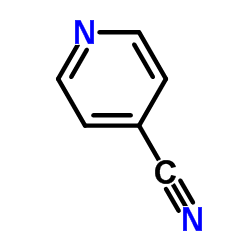
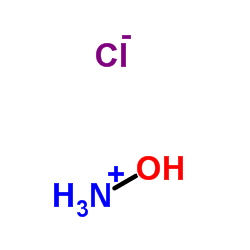

![4-[5-(Chloromethyl)-1,2,4-Oxadiazol-3-Yl]Pyridine structure](https://image.chemsrc.com/caspic/382/50737-35-4.png) CAS#:50737-35-4
CAS#:50737-35-4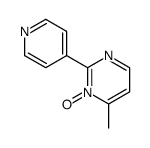 CAS#:142114-66-7
CAS#:142114-66-7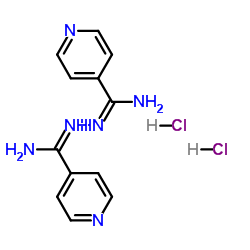 CAS#:6345-27-3
CAS#:6345-27-3 CAS#:345631-77-8
CAS#:345631-77-8![[3-(4-pyridinyl)-1,2,4-oxadiazol-5-yl]methanol(SALTDATA: FREE) structure](https://image.chemsrc.com/caspic/235/857653-94-2.png) CAS#:857653-94-2
CAS#:857653-94-2 CAS#:88059-53-4
CAS#:88059-53-4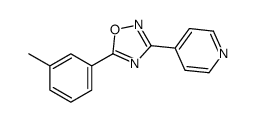 CAS#:88059-54-5
CAS#:88059-54-5